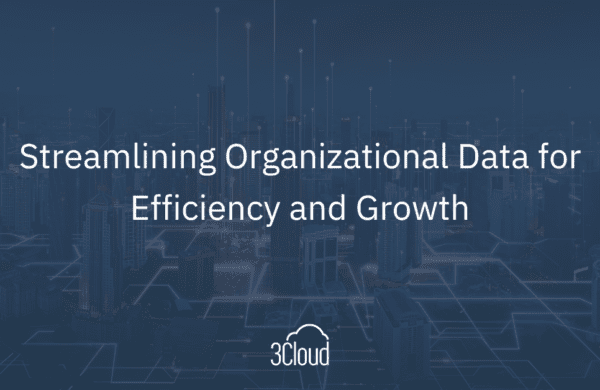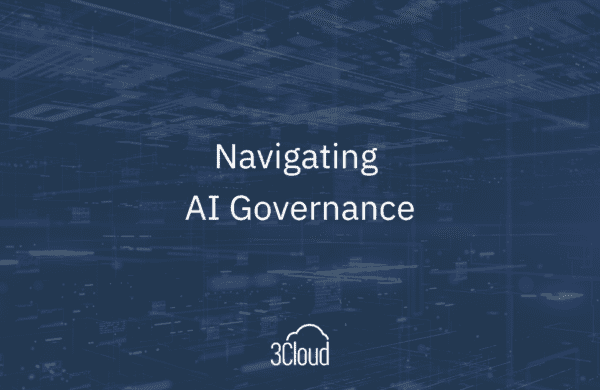We are in a time of disruption, a time of transformation, and every other buzzword you hear, implying the business landscape is changing. What does the path to success look like, and how do we know if we are on it or not?
Business Intelligence “BI,” data and analytics are now common terms that every business is talking about, but not every business is actually using to drive performance. Conversations around BI and analytics have shifted from IT conference rooms to C-Level boardrooms, and the general feeling is a mix of anxiety, confusion, and hope for business value. In typical executive fashion, it is understood that in order to succeed, the business must develop an effective and actionable strategy, but with so many new faces sitting around the technology table, it’s difficult to know if a BI strategy is a viable plan or simply a wish.
“A goal is just a wish without a plan” – Antoine de Saint-Exupery
And a plan is just a piece of paper unless it follows a few key principles. First, the strategy must cover the basics and be fundamentally sound. Second, it must address the four strategic pillars of BI strategies: people, process, data, and technology. Third, it must evolve and be carried out by a qualified team of change agents.
1: Strategy Fundamentals
Although BI strategies can be challenging due to the nature of technology disruption and the cross-departmental dependencies, the fundamentals are the same as traditional business strategies and should be followed. Forbes published a straightforward post on this topic, which outlined 10 reasons why business strategies fail. They are:
- Having a plan simply for the plan’s sake
- Not understanding the environment or focusing on results
- Partial commitment
- Not having the right people involved
- Writing the plan and putting it on the shelf
- Unwillingness or inability to change
- Having the wrong people in leadership positions
- Ignoring marketplace reality, facts, and assumptions
- No accountability or follow-through
- Unrealistic goals or lack of focus and resources
2: Mind your P’s…Not just your D and T
There are four main pillars that must be addressed in a strategic roadmap: People, Process, Data, and Technology. Over the last 10 years, I’ve helped many clients implement a data and analytics platform across multiple technologies, industries, and use cases. One surprisingly common thread was that most did not have a comprehensive, actionable roadmap that took all four of these pillars into account. Most organizations focus heavily on better (or more) technology and higher quality data. Who doesn’t love a new toy? However, in the wake of this platform, focus is a critical oversight of the people responsible and the processes through which insights flow.
As more companies undergo the customer-centric shift, it is becoming apparent how important people and processes are to all areas of the value-chain, none hold truer than a BI Strategy. Think of all the market chatter around workforce challenges and lack of quality resources for recruiting. Not to mention the massive adoption of agile, lean, DevOps, and other alternative development methodologies are aiming to improve the process in which we implement software or technology. All of the behaviors are clear that indicate companies are struggling in these areas, and yet, less than 20% of strategies have measurable outcomes around all four pillars. Following the Assessment-Vision-Roadmap, “AVR” process for creating a strategic roadmap will ensure all four strategic pillars are recognized. Speaking of people, what about the people that develop and drive the roadmap?
3: Change Agents
BI + Analytics = change. Change is hard. Change does not start at the bottom; it starts at the top and goes viral from there. A great read, People Before Things, calls out that “Change leaders connect people to purpose and ensure they know WHY a change is needed.” Chris #nailedit and I could not agree more. To become a high-performing organization, organizations must effectively utilize data and analytics for operational performance, competitive advantage, and an increased people (customer, employee, constituent) experience. To make these kinds of transformations, the people that are driving these initiatives must be trained and skilled in more than technology and data. They must be change agents, creating bridges between IT and the lines of business, removing old barriers to knowledge sharing and unleashing the power of data throughout the organization. Do not underestimate the impact of change; it is the people carrying out this change that will achieve BI excellence.
Understanding why BI is so challenging, what the fundamentals of a good strategy look like, and how to address all four strategic pillars will guarantee a robust, actionable strategy with true transformation powers. Transparency and alignment breed satisfaction, progress, and ultimately, RESULTS! I encourage you to build a cross-departmental team of change agents. Dust off that BI strategy and build a new plan. Start with your Assessment (current state), create a Vision (future state) and the gap that vision with a series of aligned, measurable and prioritized projects (Roadmap) that help you run-grow-transform your organization into high-performing.
If you’re struggling to get a strategy off the ground, contact our team of folks that would love to help you reach your potential.





